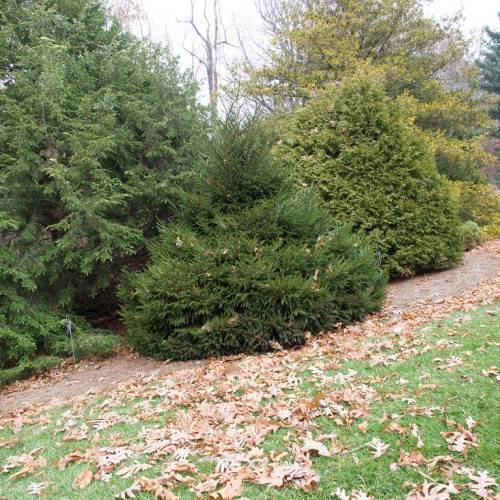
Japanese yew
Taxus cuspidata 'Densa'
Cycle:
Perennial
Watering:
Average
Hardiness Zone:
4 - 7
Flowers:
Flowers
Sun:
Full sun,part shade
Leaf:
Yes
Growth Rate:
Low
Maintenance:
Low
Poisonous To Humans:
Yes
Poisonous To Pets:
Yes
Drought Tolerant:
Yes
Salt Tolerant:
Yes
Thorny:
Yes
watering
Japanese yew should be watered thoroughly and regularly, but the exact frequency will vary depending on the season and the level of heat. During the summertime months, the soil should be kept evenly moist by watering when the top 1-2 inches of soil feels dry. From fall to mid-spring, reduce the watering frequency so that the soil dries out slightly between waterings. Reduce watering further in the winter by allowing the top 3-4 inches of soil to dry out. Make sure that you water slowly and evenly to avoid runoff and standing water, and water at the soil level rather than over the foliage.
sunlight
Japanese yew (Taxus cuspidata 'Densa') tolerates a wide variety of light conditions and can do well in full sun or partial shade. It prefers full sun for a few hours each day, but will tolerate light shade. The species grows best in areas of bright, indirect sunlight and can tolerate up to 8 hours of direct sunlight every day. Morning sunlight is generally preferred, as direct sunlight during the afternoon can be too intense and cause leaf burn.
pruning
Pruning Japanese yews is an important part of caring for the plant. This species does not require a large amount of pruning, but it's best to prune in winter, when the plant is dormant. The best time to prune is around early to mid-winter before new growth appears. To maintain the desired shape of the yew, selectively prune away any dead, diseased, or crossing branches. Once a firm frame is established for the plant, lightly prune throughout the growing season (spring and summer) to keep the form in shape and promote new growth. Be careful not to go overboard during pruning, as Japanese yews retain most of their foliage even when kept in a hedge or in a topiary form. Pruning should be done sparingly to ensure the plant remains healthy.
